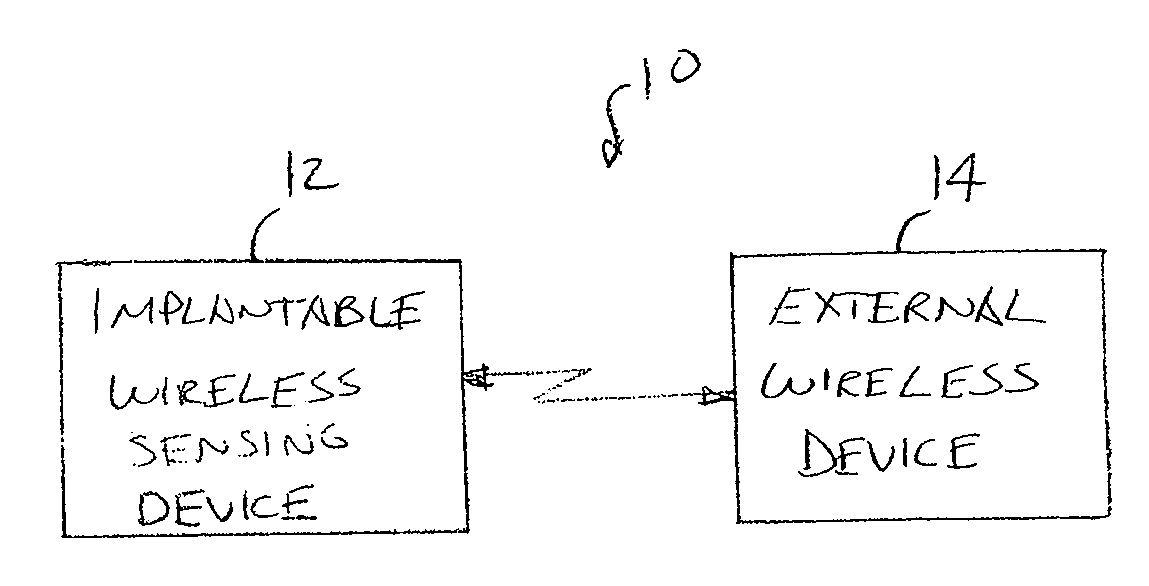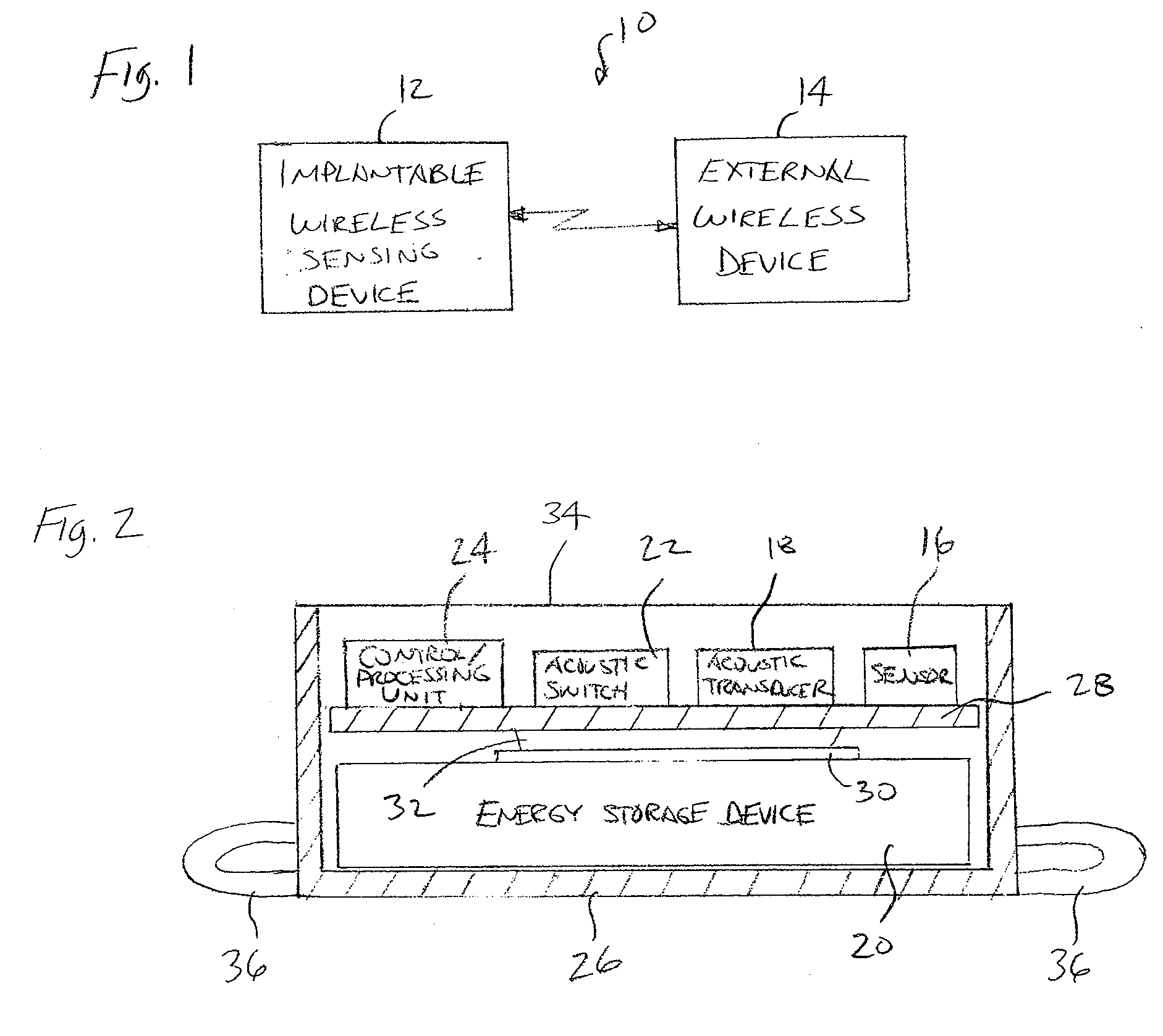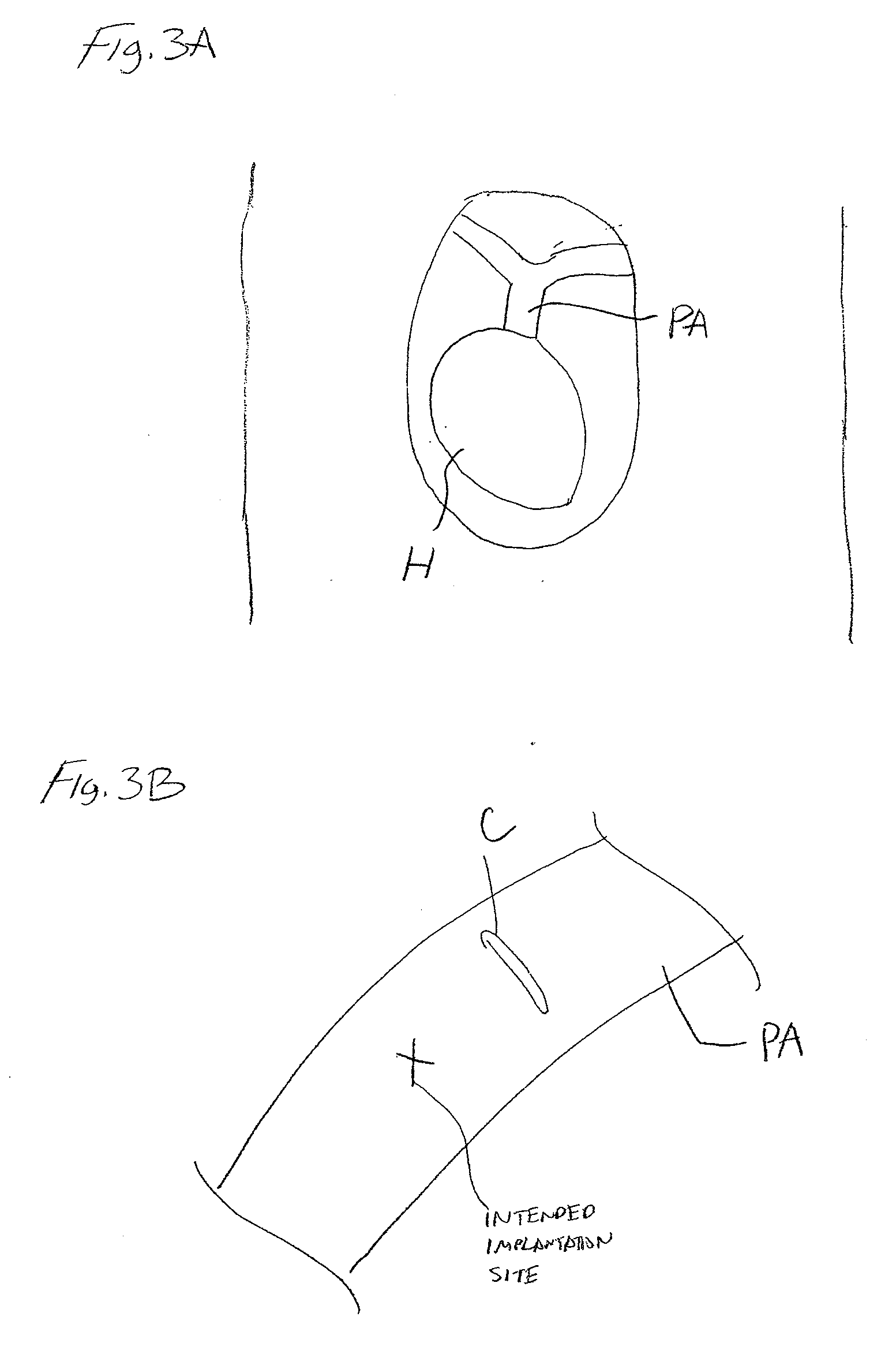Methods of implanting wireless device within an anatomical cavity during a surgical procedure
a technology of anatomical cavity and wireless device, which is applied in the field of surgical procedure of implanting wireless device within an anatomical cavity, can solve the problems of rhc not being able to directly measure left side pressure and contractility, and the use of rhc posing several risks, and the effect of delivering an implant via catheterization
- Summary
- Abstract
- Description
- Claims
- Application Information
AI Technical Summary
Benefits of technology
Problems solved by technology
Method used
Image
Examples
Embodiment Construction
[0030]Referring to FIG. 1, an implantable system 10 constructed in accordance with one embodiment of the present inventions will now be described. The implantable system 10 generally comprises an implantable sensing device 12, which is configured for being implanted within and acquiring physiological information from a patient, and an external device 14 configured for wirelessly interacting with the sensing device 12. As will be described in further detail below, the sensing device 12 is designed to be implanted within an anatomical vessel (e.g., a pulmonary artery) of a patient during a surgical procedure performed to repair or replace an anatomical structure (e.g., a heart), so that a physiological parameter (e.g., blood pressure) can be measured to post-operatively monitor the patient.
[0031]In the illustrated embodiment, the external device 14 is a handheld battery operated unit. Because the sensing device 12 is intended to be implanted deep within the tissue of the patient, the ...
PUM
 Login to View More
Login to View More Abstract
Description
Claims
Application Information
 Login to View More
Login to View More - R&D
- Intellectual Property
- Life Sciences
- Materials
- Tech Scout
- Unparalleled Data Quality
- Higher Quality Content
- 60% Fewer Hallucinations
Browse by: Latest US Patents, China's latest patents, Technical Efficacy Thesaurus, Application Domain, Technology Topic, Popular Technical Reports.
© 2025 PatSnap. All rights reserved.Legal|Privacy policy|Modern Slavery Act Transparency Statement|Sitemap|About US| Contact US: help@patsnap.com



